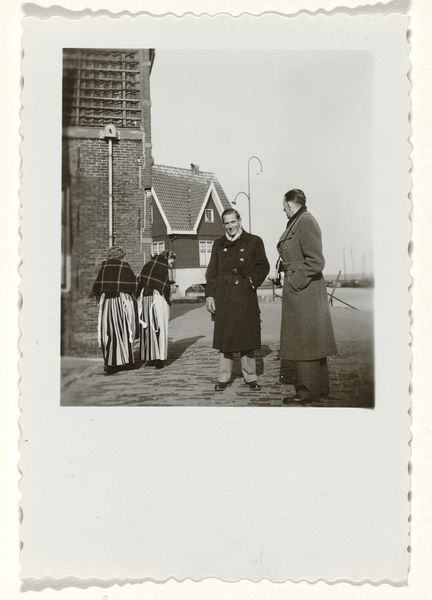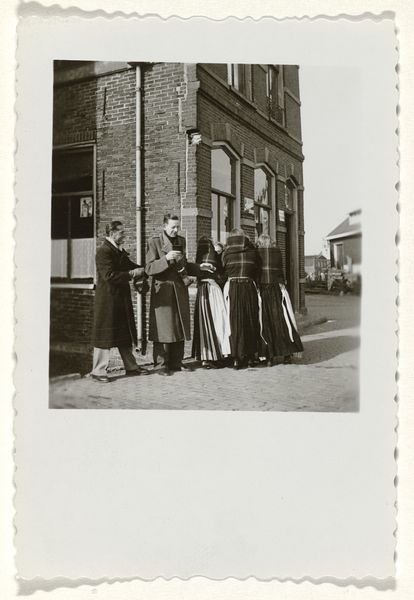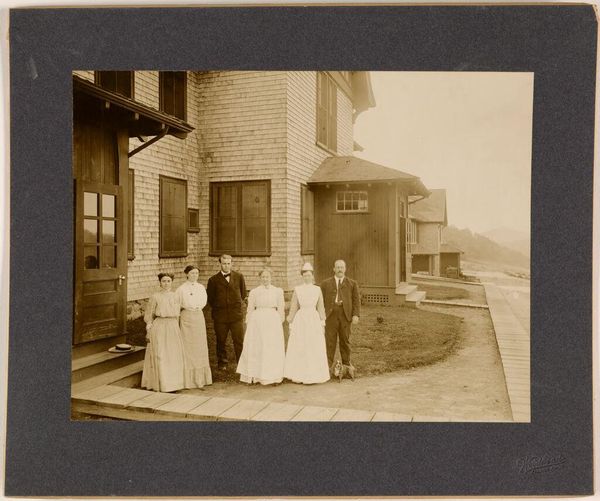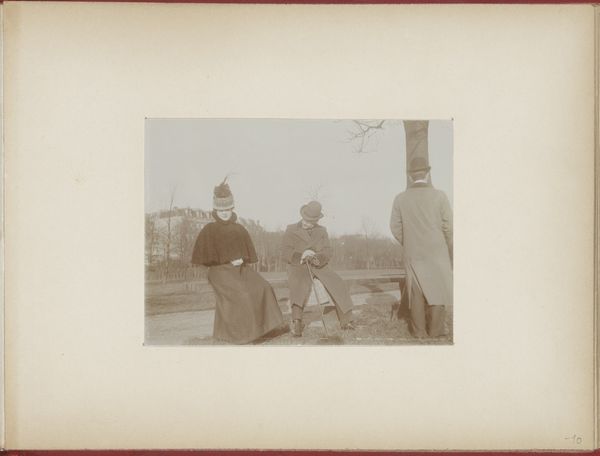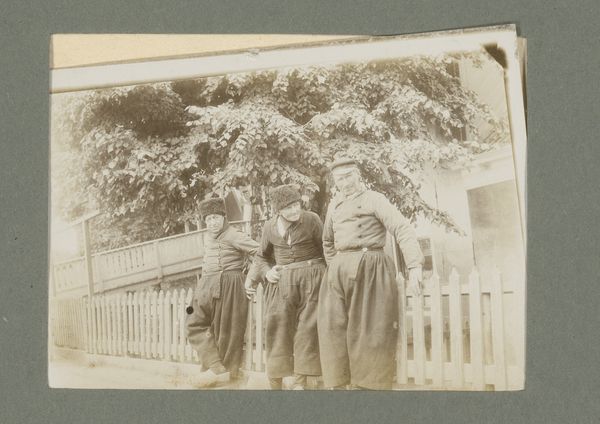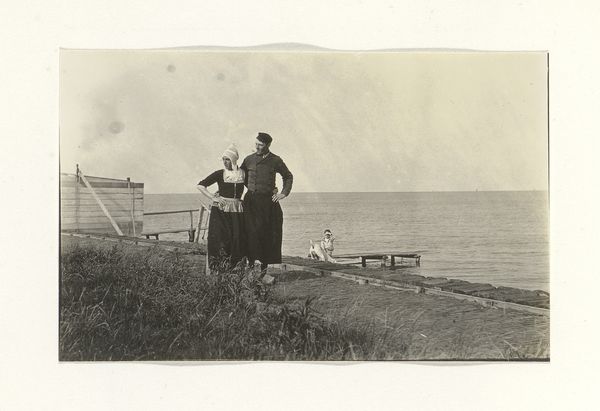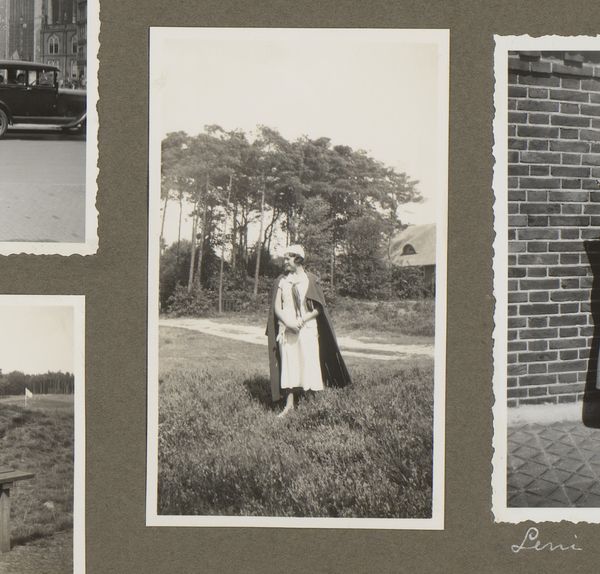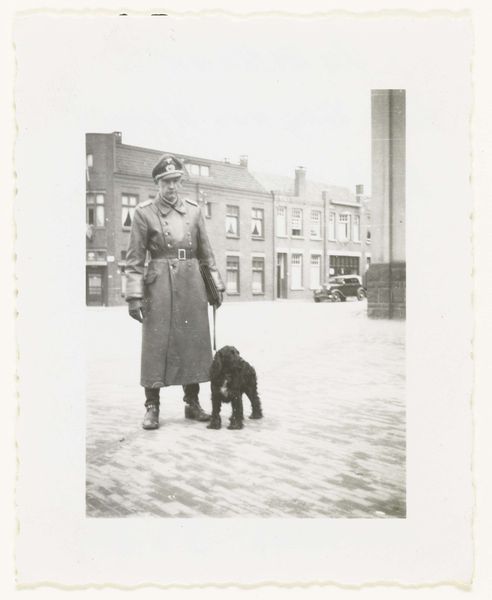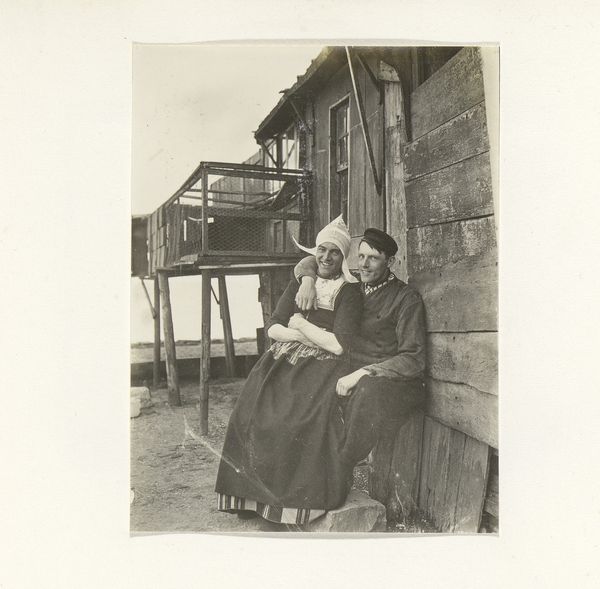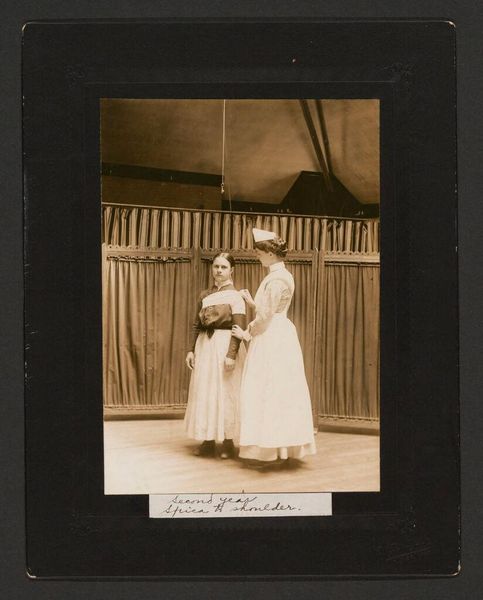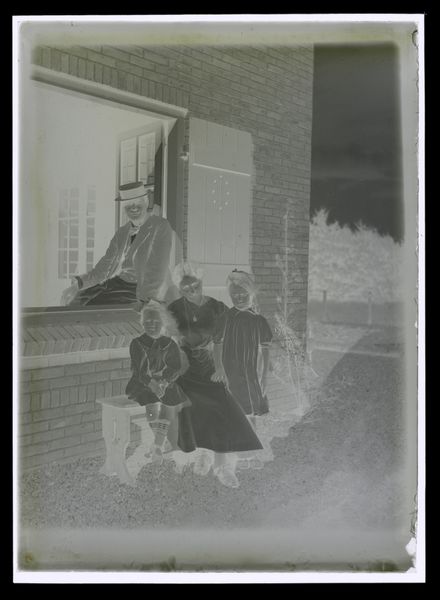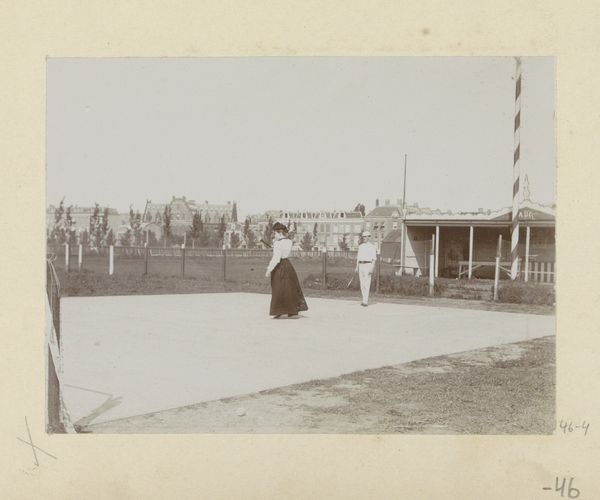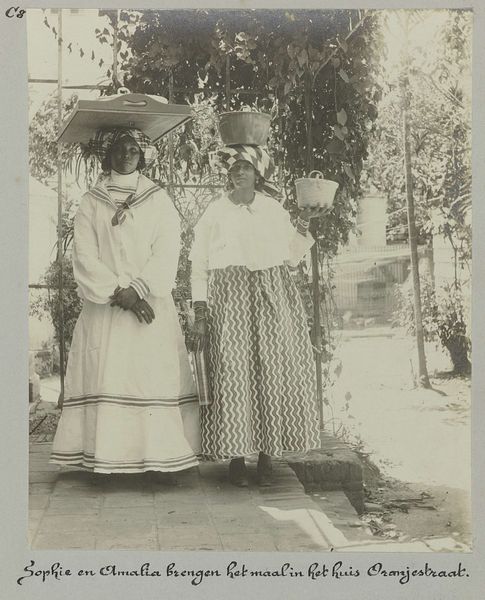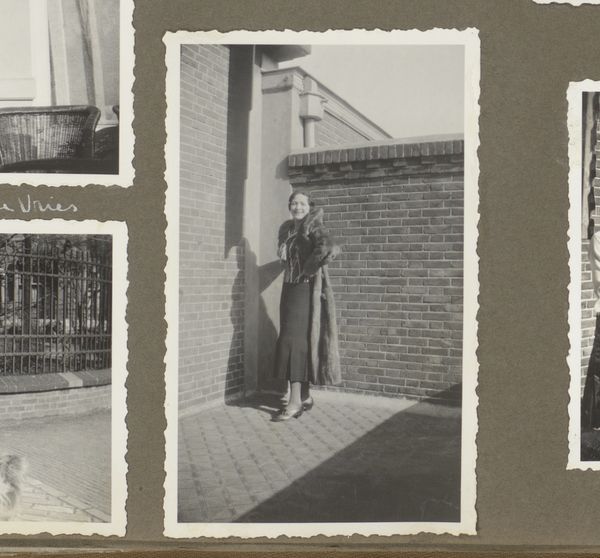
Gideon Elon, de derde echtgenoot van Isabel Wachenheimer, in een Nederlandse stad naast twee vrouwen in Nederlandse klederdracht 1956 - 1970
0:00
0:00
photography, gelatin-silver-print
#
portrait
#
print photography
#
archive photography
#
photography
#
historical photography
#
gelatin-silver-print
#
genre-painting
#
modernism
Dimensions: height 85 mm, width 60 mm
Copyright: Rijks Museum: Open Domain
Curator: This gelatin silver print, dating roughly from 1956 to 1970, presents Gideon Elon, Isabel Wachenheimer’s third husband, posing with two women in traditional Dutch garb. Editor: It's charming, though tinged with a sense of staged performance. The women's costumes create this immediate impression of folkloric presentation. Curator: Exactly. These costumes become more than garments; they represent identity, culture, and perhaps even the tourist gaze of the time. Think of what it meant, especially postwar, for identity to be outwardly performed and presented, a kind of curated otherness. Editor: It strikes me that this photograph has so much to tell about representation. Beyond just surface appearances, what are those garments communicating about belonging, and perhaps the challenges of that in the face of global change? Curator: Precisely! We’re confronted by the intersection of personal history, evident in Elon's inclusion, set against a tableau of cultural presentation. The Dutch costumes are visual anchors, rooted in history, carrying centuries of cultural memory and signifying continuity, whether authentic or romanticized. Editor: The framing also piques my curiosity. The building on the left almost boxes them in, like they are characters placed on a set. Is there a critical element, or underlying story we’re not seeing explicitly, or are we making a broader comment about authenticity and heritage? Curator: Perhaps both. It begs the question of who's behind the camera. This snapshot, with its almost forced cheer, suggests a larger conversation around post-war cultural performance and evolving self-presentation. There is an echo here from similar images that served various forms of propaganda or idealized life. Editor: Considering it within that larger context of the period helps to give more resonance to an otherwise simple image of an apparently random gathering. It turns out the ordinary photograph captures social currents and enduring struggles for meaning. Curator: I concur. This piece transcends a simple snapshot; it prompts reflections on performance, identity, and the enduring, often complex ways we represent culture. Editor: Indeed, an understated but impactful work. Thanks for bringing attention to these cultural dimensions woven into a vintage photographic image.
Comments
No comments
Be the first to comment and join the conversation on the ultimate creative platform.
